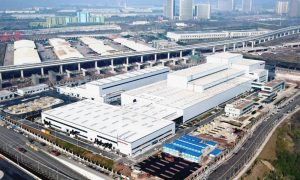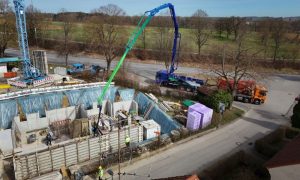Mammoet launches zero emissions option for SPMT transport
The new equipment works by converting existing SPMTs from diesel to electric power

Global heavy lift and transport specialist Mammoet has launched a new zero emission option, which is designed to reduce the carbon impact of its equipment when working on large infrastructure projects such as bridges, wind turbines and power station components.
Mammoet said the new equipment works by converting existing Self-propelled Modular Transporters (SPMTs) from diesel to electric power. SPMTs are the workhorse of heavy industry, used in almost every large energy and construction project worldwide.
The new vehicle is part of Mammoet’s commitment to energy transition, and its move towards sustainability as a manufacturer. Fitting new engines in existing SPMT fleets cuts down on both waste and additional construction, compared to purchasing new ‘zero emission’ equipment.
The new SPMT can eliminate the carbon footprint otherwise incurred by site transports, allowing customers to reduce the impact of large infrastructure projects on surrounding people, businesses and infrastructure.

According to Mammoet, this solution was part-financed by the DKTI, a Dutch government programme to develop climate technologies and innovations in logistics. The company then worked with a leading provider of zero emission powertrains for heavy industry to bring the electric power pack solution to market.
Developed by Mammoet in 1984 and with over 40,000 axle lines in use globally, the SPMT revolutionised heavy industry by moving any heavy load safely, efficiently and with an emphasis on precision.
Mammoet said it has developed a retrofit kit to replace diesel engines in the vehicles with electric motors. Once converted, each SPMT works in the same way as before: transporting objects up to thousands of tonnes at walking pace, using a remote control.
The new motor also reduces noise levels at project sites, making working conditions quieter and safer. Communication between staff is clearer, while work can take place for longer periods at sites where sound restrictions are already in place.















